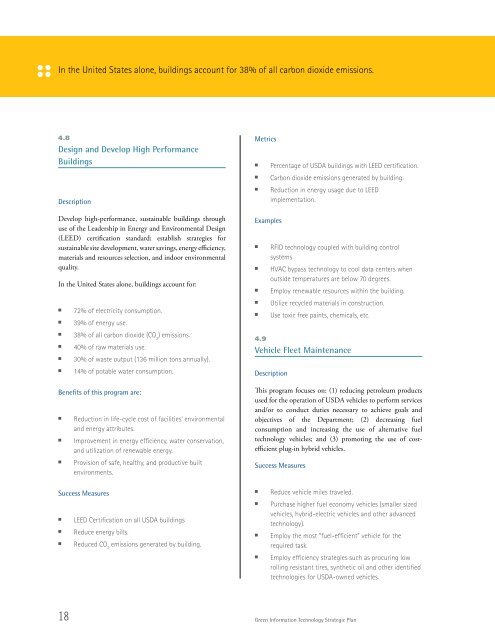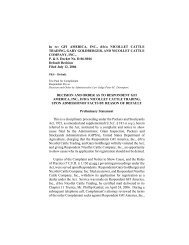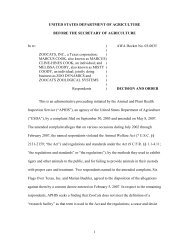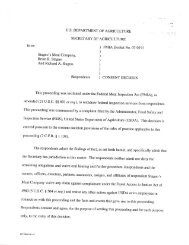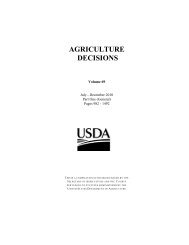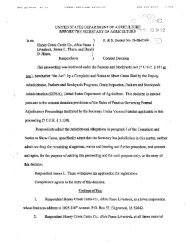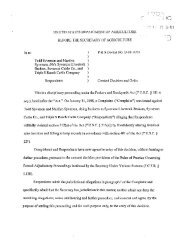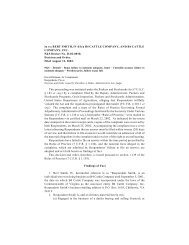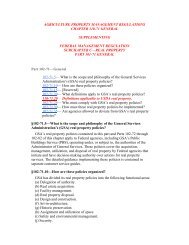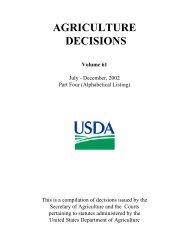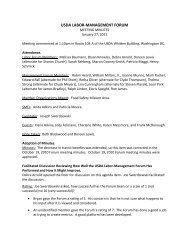Green Information Technology Strategic Plan - Departmental ...
Green Information Technology Strategic Plan - Departmental ...
Green Information Technology Strategic Plan - Departmental ...
You also want an ePaper? Increase the reach of your titles
YUMPU automatically turns print PDFs into web optimized ePapers that Google loves.
In the United States alone, buildings account for 38% of all carbon dioxide emissions.<br />
4.8<br />
Design and Develop High Performance<br />
Buildings<br />
Description<br />
Develop high-performance, sustainable buildings through<br />
use of the Leadership in Energy and Environmental Design<br />
(LEED) certification standard; establish strategies for<br />
sustainable site development, water savings, energy efficiency,<br />
materials and resources selection, and indoor environmental<br />
quality.<br />
In the United States alone, buildings account for:<br />
n 72% of electricity consumption.<br />
n 39% of energy use.<br />
n 38% of all carbon dioxide (CO 2 ) emissions.<br />
n 40% of raw materials use.<br />
n 30% of waste output (136 million tons annually).<br />
n 14% of potable water consumption.<br />
Benefits of this program are:<br />
n Reduction in life-cycle cost of facilities’ environmental<br />
18<br />
and energy attributes.<br />
n Improvement in energy efficiency, water conservation,<br />
and utilization of renewable energy.<br />
n Provision of safe, healthy, and productive built<br />
environments.<br />
Success Measures<br />
n LEED Certification on all USDA buildings<br />
n Reduce energy bills.<br />
n Reduced CO 2 emissions generated by building.<br />
Metrics<br />
n Percentage of USDA buildings with LEED certification.<br />
n Carbon dioxide emissions generated by building.<br />
n Reduction in energy usage due to LEED<br />
Examples<br />
implementation.<br />
n RFID technology coupled with building control<br />
systems.<br />
n HVAC bypass technology to cool data centers when<br />
outside temperatures are below 70 degrees.<br />
n Employ renewable resources within the building.<br />
n Utilize recycled materials in construction.<br />
n Use toxic free paints, chemicals, etc.<br />
4.9<br />
Vehicle Fleet Maintenance<br />
Description<br />
This program focuses on: (1) reducing petroleum products<br />
used for the operation of USDA vehicles to perform services<br />
and/or to conduct duties necessary to achieve goals and<br />
objectives of the Department; (2) decreasing fuel<br />
consumption and increasing the use of alternative fuel<br />
technology vehicles; and (3) promoting the use of costefficient<br />
plug-in hybrid vehicles.<br />
Success Measures<br />
n Reduce vehicle miles traveled.<br />
n Purchase higher fuel economy vehicles (smaller sized<br />
vehicles, hybrid-electric vehicles and other advanced<br />
technology).<br />
n Employ the most “fuel-efficient” vehicle for the<br />
required task.<br />
n Employ efficiency strategies such as procuring low<br />
rolling resistant tires, synthetic oil and other identified<br />
technologies for USDA-owned vehicles.<br />
<strong>Green</strong> <strong>Information</strong> <strong>Technology</strong> <strong>Strategic</strong> <strong>Plan</strong>


